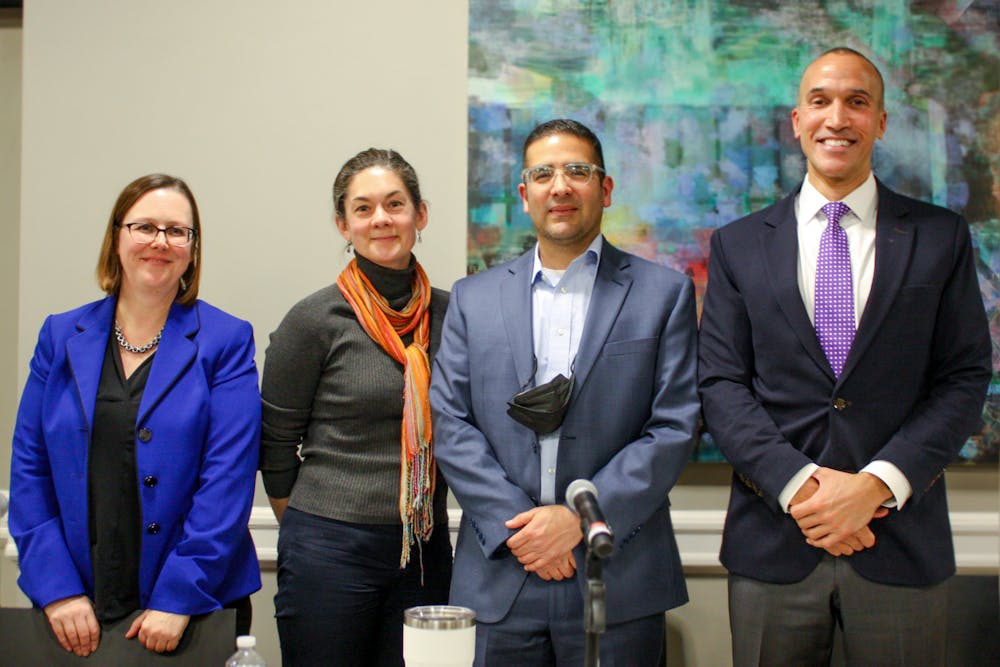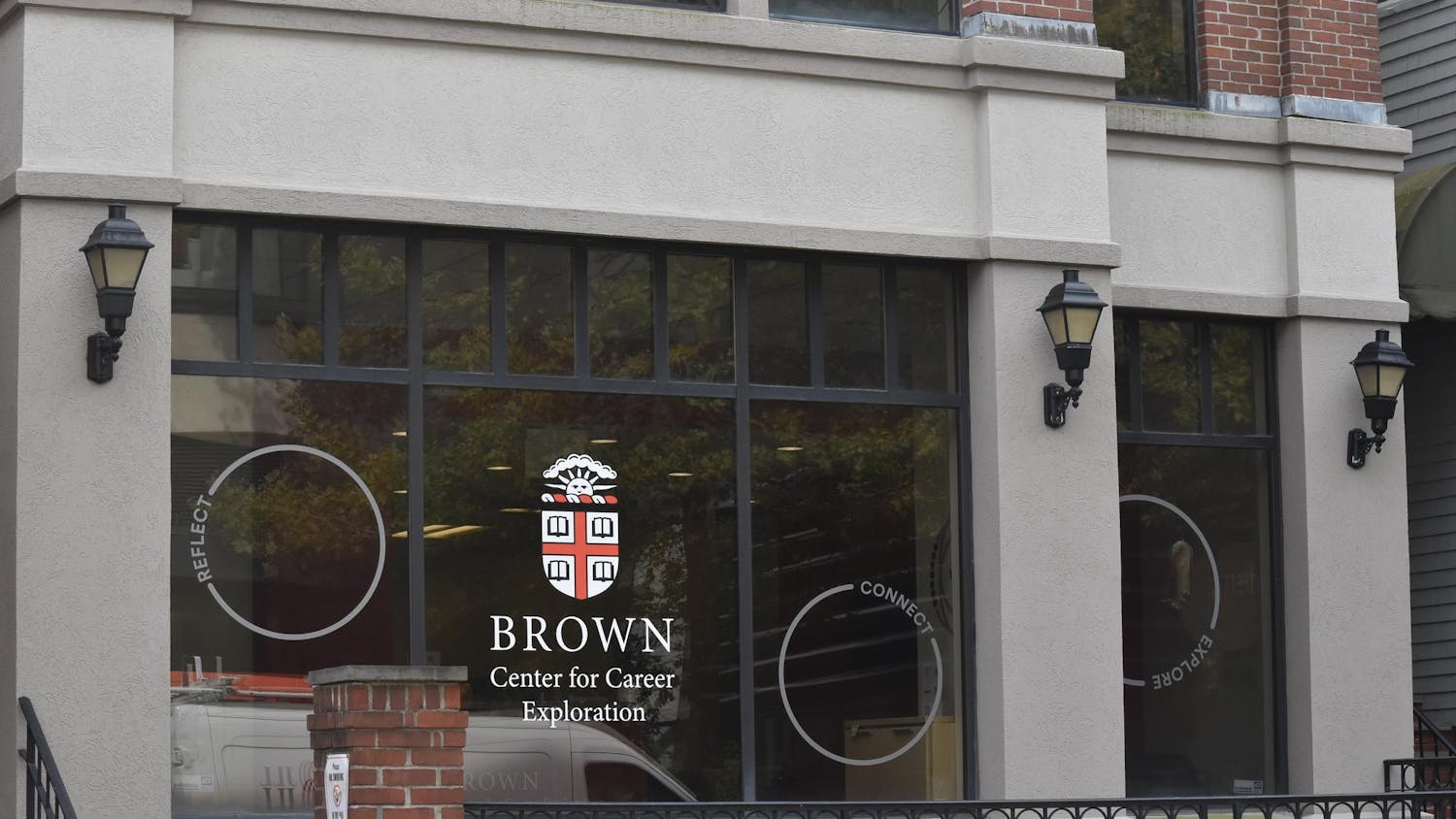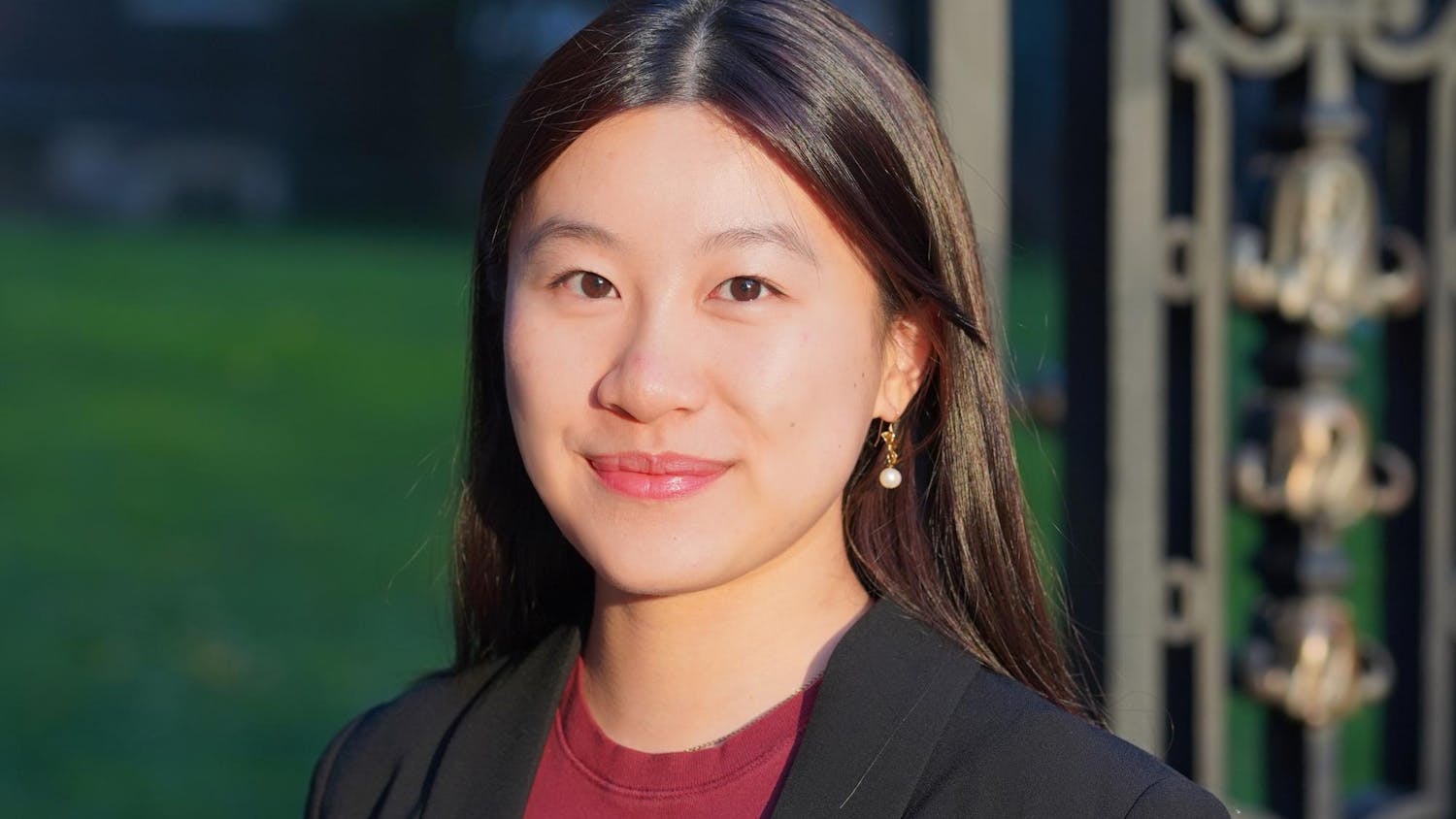The end of affirmative action, which may come this summer, likely won’t impact the type of students who go to college, said Lindsay Page, associate professor of education policy, at a Wednesday panel sponsored by the University’s Department of Education.
But it will “have a dramatic impact on … where students get to go, and what institutions they go to,” Page said.
More selective institutions like Brown would see “greater losses in diversity” without race-conscious admissions, Associate Provost for Enrollment Logan Powell said at the event.
“The selectivity of the institution matters and the more selective you are, the greater the losses in diversity,” Powell said. He referenced research from the district court that first heard the Harvard case, which showed that eliminating race-conscious admissions would greatly reduce the number of Black and Hispanic students in their undergraduate population.
Powell, Page, Associate Professor of Education and History Tracy Steffes and Assistant Professor of Education David Rangel discussed what the future might hold for selective schools such as Brown — as well as the historical and current implications of two U.S. Supreme Court cases that could outlaw race-conscious admissions in higher education — during the Wednesday panel titled “Affirmative Action: Past, Present and Future.”
Race-conscious admissions policies in higher education have sparked controversy since their implementation in the 1960s. Opponents of the practice branded affirmative action “reverse racism,” instead arguing for “colorblind admissions,” according to Steffes, who currently serves as chair of the education department.
Those same ideas have been used in challenges to affirmative action over the decades, including the most recent challenges to affirmative action — two cases brought by Students for Fair Admissions against Harvard University and the University of North Carolina, with rulings on both to come this summer.
Impacts on enrollment, application
“Dramatic variation” exists between different institutions of higher education, Page explained — in terms of prestige, selectivity, institutional resources and the student experience.
Shifting to race-neutral college admissions — not “actively discriminating,” but not considering race as a factor either — would “continue to reproduce inequality … in a structurally rigged system that protects the unequal status quo,” Steffes said during the event.
“We should care deeply about this decision because of the role that our elite institutions play in seeding leadership pathways in the United States,” as well as diversifying leadership, Page said.
One example of the impacts of race-neutral admissions is already available from California, Powell said, pointing to the impacts on the University of California system after the passage of Proposition 209 in California.
The ballot initiative banned discrimination or “preferential treatment on the basis of race, sex, color, ethnicity” in public education. Quickly, the enrollment of students of color, and Black students in particular, at the University of California at Berkeley and the University of California, Los Angeles “plummeted,” Powell said. But so did the number of Black applicants.
“This wasn’t just a selection problem. This was an application problem,” Powell said, explaining that Black and Hispanic students no longer thought they had a shot at getting in.
Powell explained that he has concerns about the same trend taking place at Brown and its peer institutions: “I can’t admit students who don’t apply.”
Mahasan Chaney, an assistant professor of education who spoke on the panel, said that she experienced that phenomenon growing up in Berkeley: When one of her mentors in high school suggested she apply to UC Berkeley, her reaction was, “I can’t go there.”
In Michigan, the concentrated impacts of race-neutral admissions on elite institutions became clear after the state eliminated race-conscious admissions in 2006, Powell said. At the highly selective University of Michigan, the proportion of Black students fell significantly; at Michigan State University, which has a 83.4% acceptance rate, the results were “nearly inconsequential,” Powell explained.
“What can we use to inform our outreach that will allow us to change the minds of students who think that there is no chance for them to be admitted to institutions like Brown and Berkeley and UCLA and Harvard?” Powell said. “That’s my challenge.”
Alternative approaches to race-conscious admissions
Plans to bolster racial diversity by admitting based on socioeconomic diversity “simply don’t get the job done,” Page said. Racial and socioeconomic status in the United States are not interchangeable, “and they can’t be traded one for the other in implementing these kinds of policies.”
And other policies that have served to bolster diversity at other higher education institutions, such as Texas’ Top 10 Percent Law, would not work at Brown, Powell said.
The law, which applies to all schools in the University of Texas system save for the University of Texas at Austin, requires that students graduating in the top 10 percent of their high school class receive automatic admission to state-funded universities; for applicants to the Austin campus, students in the top 6% of their high school classes are automatically admitted.
In Texas, the law’s success partially stems from the size and diverse demographics of the state as well as the high levels of racial segregation at the high school level, ensuring diverse higher-education demographics as well.
A similar strategy wouldn’t work for a school like Brown, which posted a 5% admission rate for the class of 2026 and received 51,290 applications to the class of 2027, including students from all over the world, Powell said.
“You can't do it with a 5% acceptance rate and you can't do it when you live in the state of Rhode Island,” Powell said.
In the absence of race-based admissions, admissions offices might use legacy admissions as one way to continue admitting a diverse class, Powell said: Brown has admitted an increasingly diverse class of students over time.
Niyanta Nepal ’25 questioned the panel about how using legacy admissions for the purpose of diversity would ensure that low-income students of color are admitted to the University.
“We have admitted increasingly diverse classes of students, which means that their children are increasingly diverse,” Powell noted, explaining that roughly one-third of the legacy students and student-athletes on campus self-identify as students of color.
Grace Moore ’25, who was also present at the event, said she appreciated the panel’s “honesty” about the possible outcomes following the court’s decisions as well as Brown’s position in the ongoing case.
“I am interested in seeing what Brown will do in the coming years (and) just how well they’ll stick to their word of increasing diversity with each class,” Moore said.
“We are thinking day and night about what we can do to maintain our commitment to diversity,” Powell said, “and to continue to build diverse classes if at all possible.”
Clarification: This story has been updated to include the name of all four panelists.
Haley Sandlow is a contributing editor covering science and research. She is a junior from Chicago, Illinois studying English and French.





